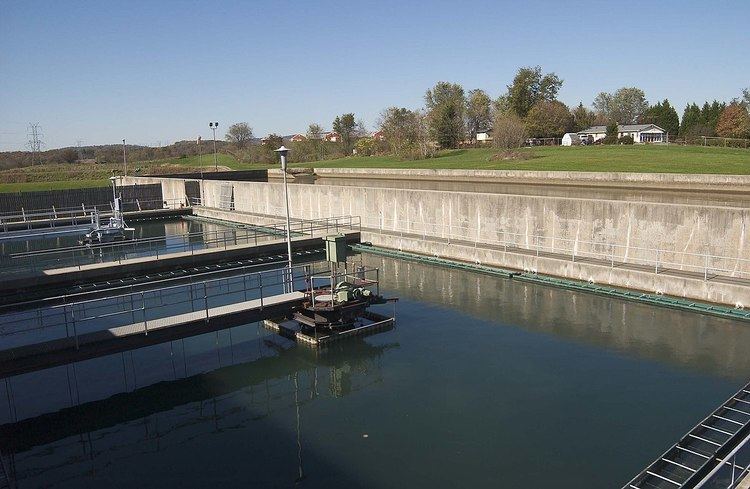 | ||
In water treatment, coagulation is a process that occurs when a coagulant is added to water to "destabilize" colloidal suspensions. Conversely, flocculation involves the addition of polymers that clump the small, destabilized particles together into larger aggregates so that they can be more easily separated from the water. Coagulation is a chemical process that involves neutralization of charge whereas flocculation is a physical process and does not involve neutralization of charge. The coagulation-flocculation process can be used as a preliminary or intermediary step between other water or wastewater treatment processes like filtration and sedimentation. Iron and aluminium salts are the most widely used coagulants but salts of other metals such as titanium and zirconium have been found to be highly effective as well.
Contents
Mechanism
In a colloidal suspension, particles will settle very slowly or not at all because the colloidal particles carry surface electrical charges that mutually repel each other. A coagulant (typically a metallic salt) with the opposite charge is added to the water to overcome the repulsive charge and "destabilize" the suspension. For example, the colloidal particles are negatively charged and alum is added as a coagulant to create positively charged ions. Once the repulsive charges have been neutralized (since opposite charges attract), the van der Waals force will cause the particles to cling together (agglomerate) and form micro floc.
Factors
Coagulation is affected by the type of coagulant used, its dose and mass; pH and initial turbidity of the water that is being treated; and properties of the pollutants present. The effectiveness of the coagulation process is also affected by pretreatments like oxidation.
Jar Test
The dose of the coagulant to be used can be determined via the Jar Test. The jar test involves exposing same volume samples of the water to be treated to different doses of the coagulant and then simultaneously mixing the samples at a constant rapid mixing time. The microfloc formed after coagulation further undergoes flocculation and is allowed to settle. Then the turbidity of the samples are measured and the dose with the lowest turbidity can be said to be optimum.
Streaming Current Detector
An automated device for determining the coagulant dose is the Streaming Current Detector (SCD). The SCD measures the net surface charge of the particles and shows a streaming current value of 0 when the charges are neutralized (cationic coagulants neutralize the anionic colloids). At this value (0), the coagulant dose can be said to be optimum.
Limitations
Coagulation itself results in the formation of floc but flocculation is required to help the floc further aggregate and settle. The coagulation-flocculation process itself removes only about 60%-70% of Natural Organic Matter (NOM) and thus, other processes like oxidation, filtration and sedimentation are necessary for complete raw water or wastewater treatment. Coagulant aids (polymers that bridge the colloids together) are also often used to increase the efficiency of the process
